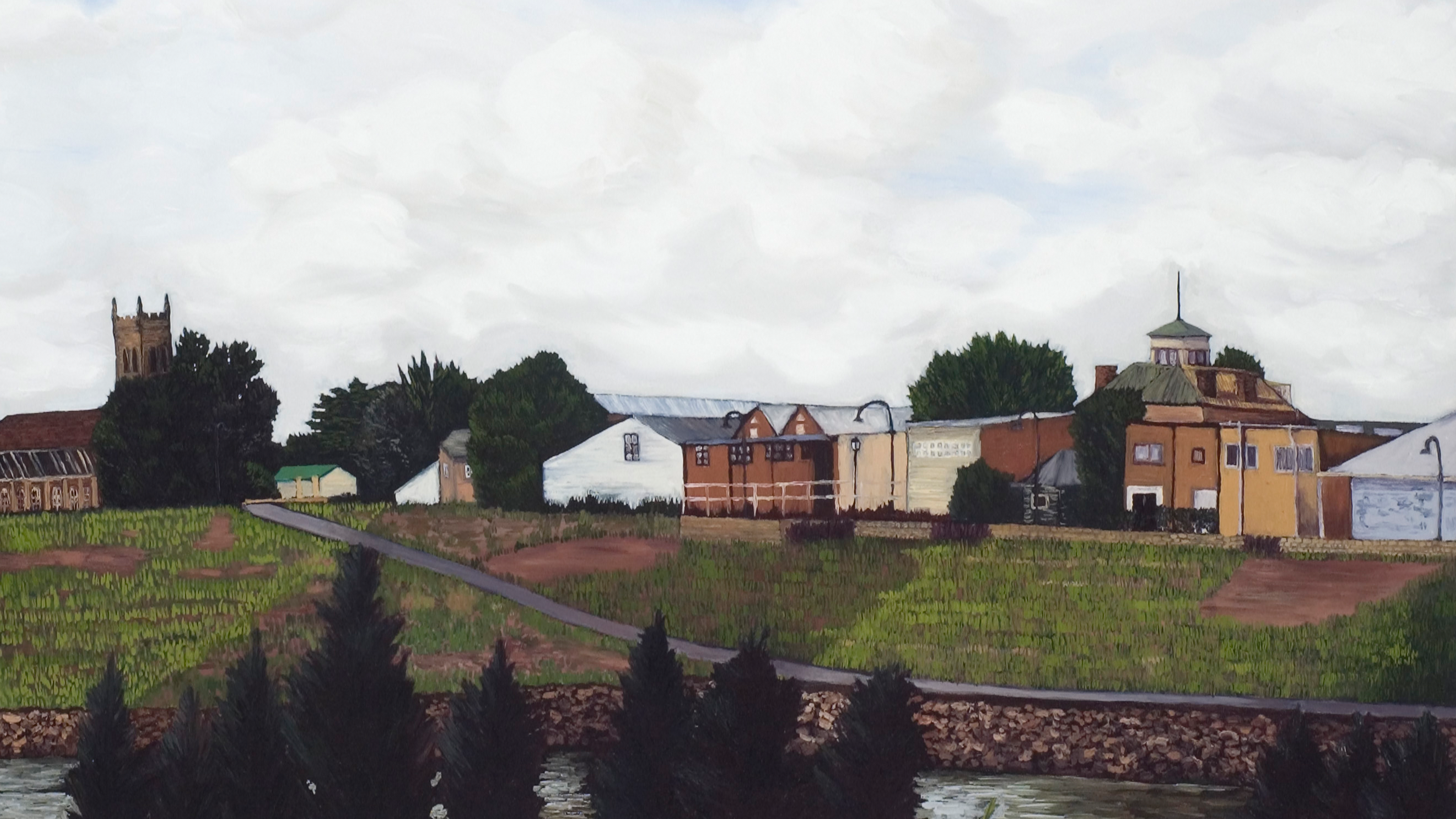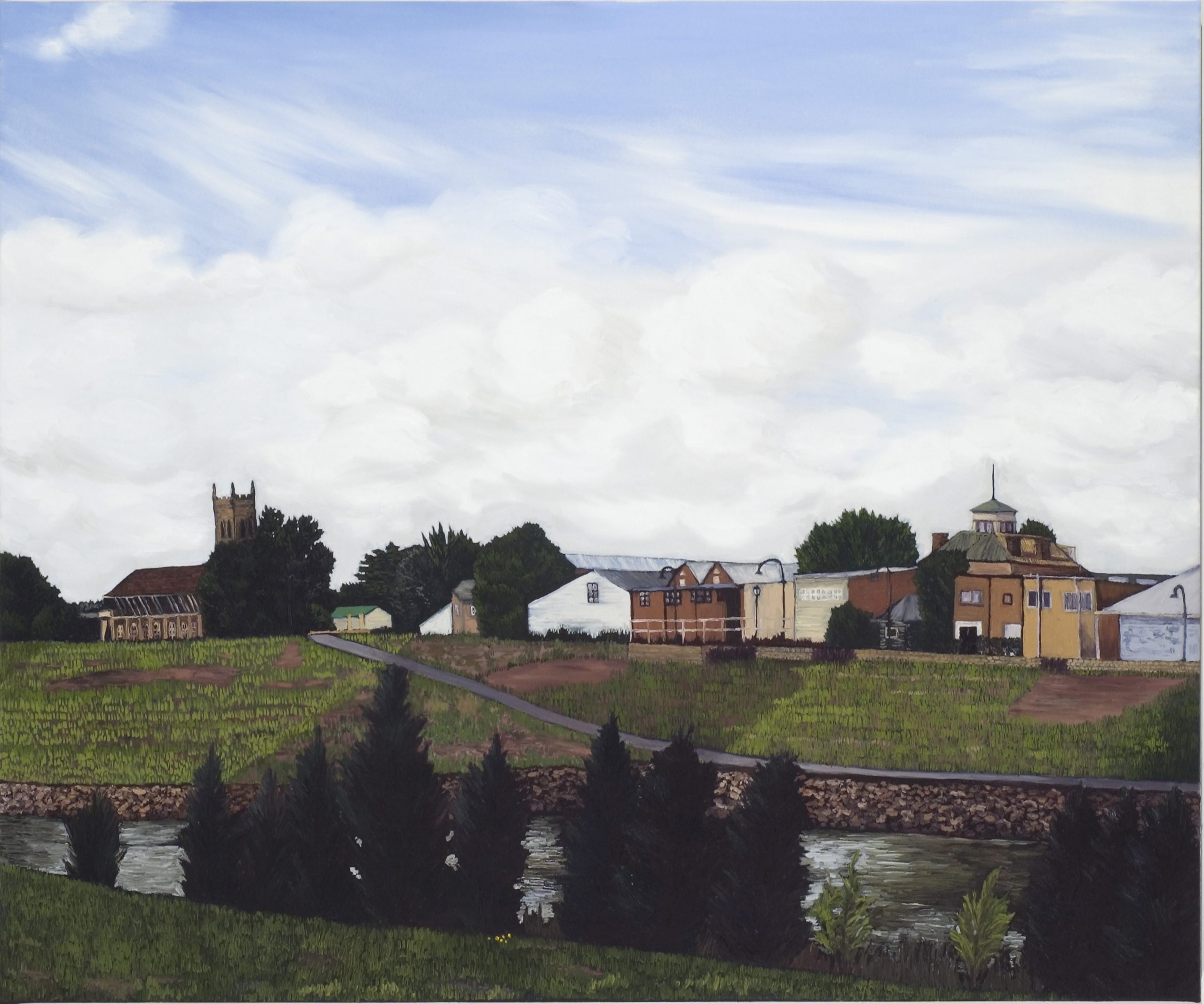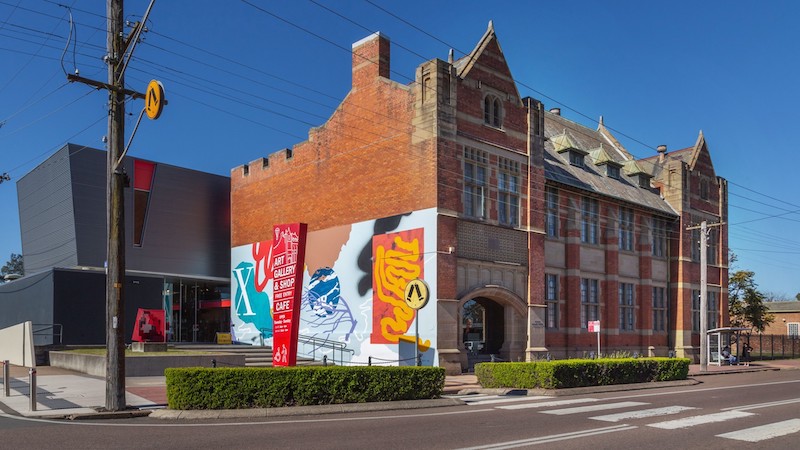Gateways to Waterways
Emma Lohmann, A view of Maitland (after Vermeer) 2006
Emma Lohmann’s (1970-) A view of Maitland (after Vermeer) pays homage to Johannes Vermeer’s A view of Delft (1663), a masterpiece described by the nineteenth-century novelist Marcel Proust as ‘the most beautiful painting in the world’. Vermeer painted the waterborne entrance to the Dutch city of Delft, where visitors arrived at the city’s imposing gateway by barge and boat. Lohmann also depicts a view across the water but paints the commercial centre with its back turned away from the river to which the city owes its existence.
The City of Maitland was found in 1820 on the banks where the Hunter River reached its tidal limit. Its deep-river port was in the town of Morpeth, eight kilometres downstream, which was the head of navigation for large coastal ships trading in goods between Sydney, Newcastle and the world beyond. Maitland was an important distribution centre, servicing the rich farming land of the Hunter River floodplain. It was the second largest town in Australia until the arrival of the railway in Newcastle in the 1850s, which led to the decline in the coastal shipping trade.
The river, once vital to Maitland’s prosperity, was superseded by land transport, and the town’s focus shifted to the main streets and roads on which its future depended. Lohmann has painted the back walls of a cluster of commercial buildings that sit atop the raised levee bank, engineered to protect the city from floods. A grey concrete path leading from St John’s chapel to the edge of the river suggests a lasting connection to the waterway.
Since Lohmann completed the painting that connection has been revived and celebrated through the Riverlink Building at Central Maitland. This award-winning architectural development, built in 2018, links Maitland’s High Street to the banks of the Hunter River, creating a contemporary gateway that honours the city’s settler heritage and its debt to the river.





